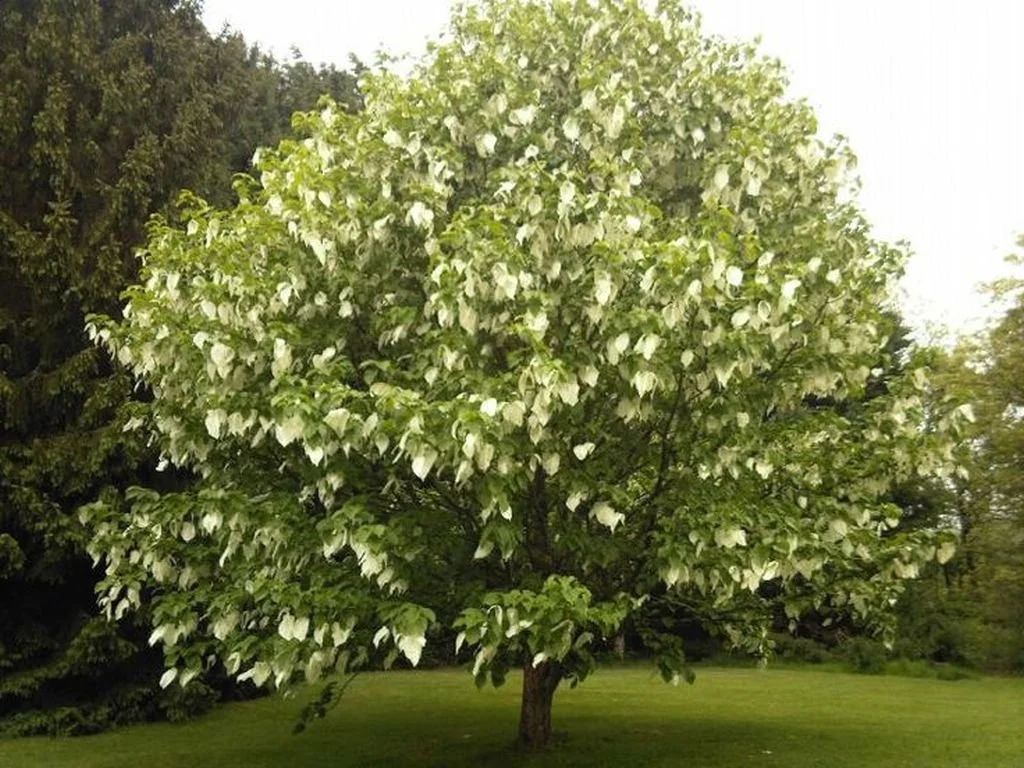Handkerchief Tree
The ‘Holy Grail’ of botany
Once known as the “holy grail” of botany, a tree so rare and so beautiful that, when it flowered in Kew Gardens, thousands of visitors' flock to see it.
Description
A medium-sized hardy deciduous tree. Davidia involucrata is known by many names, Handkerchief tree, Dove or Ghost tree.
In late spring masses of yellow-green flowers with purple anthers appear surrounded by large white leafy bracts of unequal size, the larger up to 18cm (7ins long), hang down and create amazing white tiers which resemble white doves or pinched handkerchieves.
Facts and Figures
A slow-growing conical tree reaching a height of approx 13m/40ft.
Planted 1974 It is very long-lived, in fact it can exceed a century of life.
At a committee’s meeting dated 14th March 1975. The Committee decided to name a new tree after the Changes, the BBC film partly made in the Square, whose Assistant Director had been induced by Mrs Hannam to make a contribution to funds.
The species was introduced from China to Europe.first recorded in 1869 in Western China by a French missionary botanist Father David. Its seed was collected and brought back to the UK by Ernest Wilson during a collecting trip for Kew Gardens in 1901.
Wildlife
The flowers are attractive to bees and many other pollinating insects as they are rich in nectar and pollen.
Myths and Legends
The tree is known as the dove tree in Chinese mythology. Based on what is apparently a true story, various versions of the legend exist but the basic gist is thus. During the Han dynasty (206 BC–220 AD), the beautiful princess Zhaojun Wang was married to the king of a distant northern tribe and was sent to live with him, a thousand miles from her home. Missing her family, Zhaojun sent letters home attached to doves, which, exhausted from their long journey, finally always landed to rest in a particular tree outside her family’s home. When in flower the tree looked like it was full of the white doves she had sent and was hence named after them.
appealing to insects
white leafy bracts


